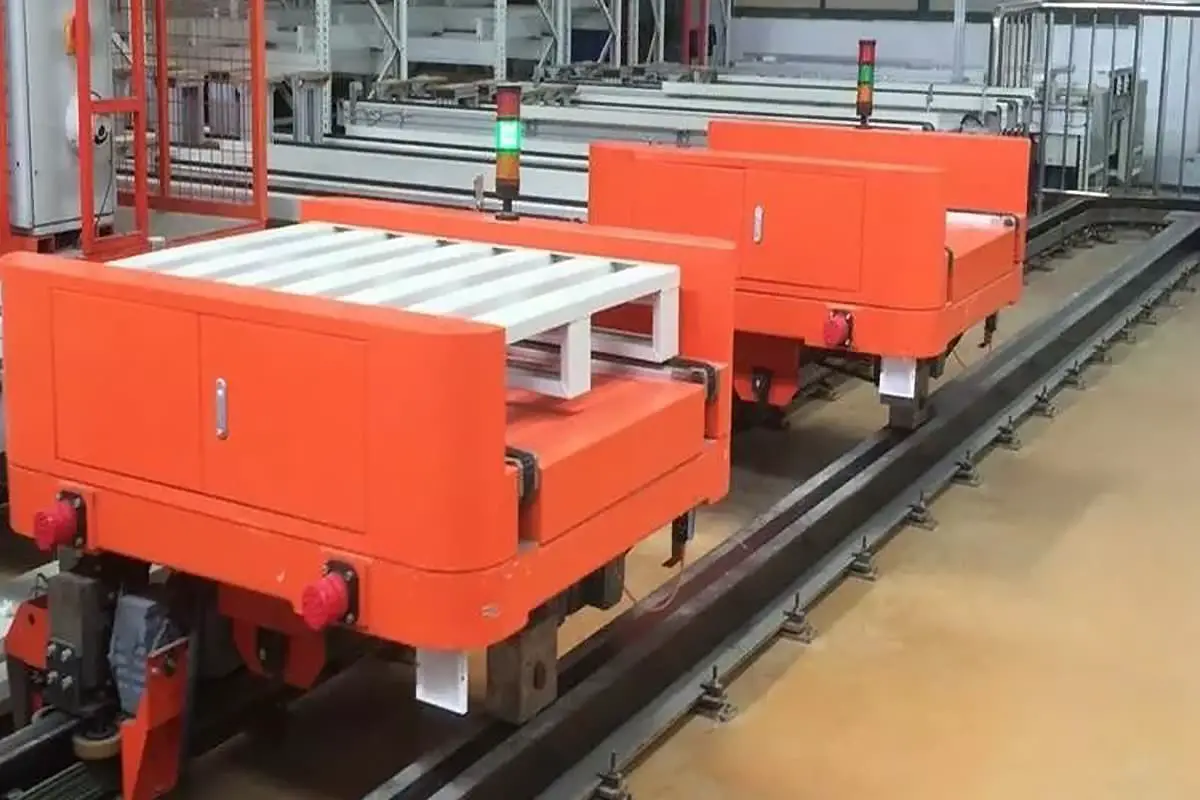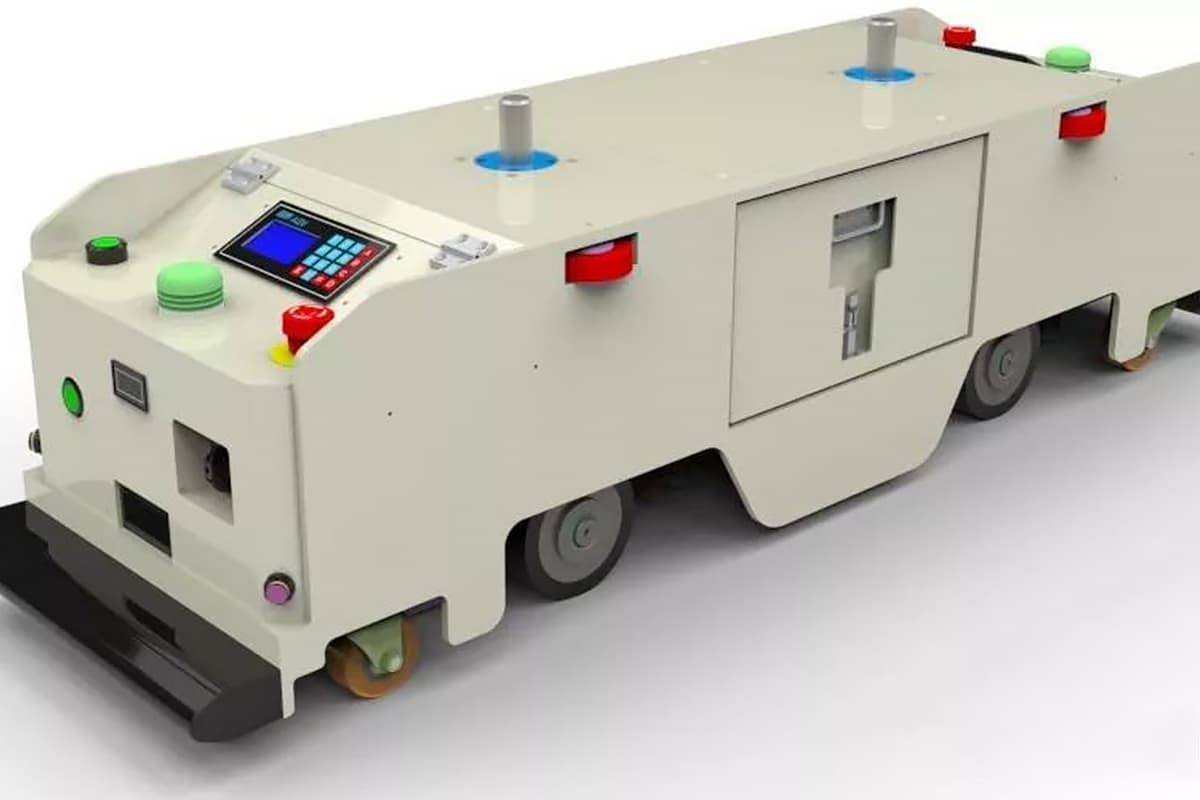
Have you ever wondered how modern warehouses operate so efficiently? This article explores the fascinating world of mobile handling robots—AGV, RGV, and IGV. Learn the differences between these robots and discover how they revolutionize logistics, making operations faster and smarter. Get ready to uncover the secrets behind their impressive capabilities!

As one of the core equipment in intelligent logistics, mobile handling robots have seen explosive growth in recent years. In the mobile robot market, besides the well-known AGV, RGV and IGV are also playing their roles in the automated logistics system.
However, many don’t have a clear concept of the differences between AGV, IGV, and RGV. Through this article, we will clarify.

With the rapid rise of intelligent manufacturing, the ensuing fourth industrial revolution has led to rapid development in the intelligent manufacturing industry. Mobile handling robots, as one of the core pieces of equipment in intelligent logistics, have presented explosive growth in recent years.
In the mobile robot market, besides the common AGV, RGV and IGV have also rapidly emerged in the field of automated logistics.
RGV, or Rail Guided Vehicle, is commonly used in high-density storage methods for vertical warehouses. The vehicle’s path can be designed to be as long as necessary, and there’s no need for additional equipment to enter the aisle when moving or transporting goods. This results in speedy, safe operations that can effectively improve the efficiency of the warehouse system.
It can also be used for the connection and transfer between parallel conveyor lines, realizing logistics connectivity. Its main characteristic is that it has a physical track on the ground and walks along this inherent track with relatively single routes.

AGV stands for Automated Guided Vehicle. An AGV is a transport vehicle equipped with electromagnetic, optical, or other automatic guidance devices. It can travel along a designated guidance path and has safety protection and a variety of transport functions.
Compared to RGV, its track can go straight, turn, branch, merge, and other forms, demonstrating a certain level of flexibility.

IGV, Intelligent Guided Vehicle, is a new concept that has been proposed in recent years. Compared to AGV, IGV has a higher degree of flexibility. It doesn’t need any fixed markers to drive, and its path is flexible and changeable. It can be flexibly scheduled according to actual production needs, is simple to plan, and meets the needs of most factories.

In summary, RGV, AGV, and IGV are all used to achieve automated material handling and transfer. But in terms of automation and intelligence, IGV > AGV > RGV. RGV moves along tracks, AGV partially relies on markers like barcodes and QR codes, while IGV operates completely autonomously.
The progression from RGV to IGV also indicates a certain trend in the development of mobile robots: more intelligence, less reliance on auxiliary tools, and a higher degree of flexibility.
However, this doesn’t mean that IGV will replace other devices in the future. At least for now, in different application scenarios, they all have their own advantages. There is no absolute rule that high automation will eliminate low automation, or high intelligence will replace low intelligence.
RGVs are widely used in logistics systems and workstation production lines. They can be automatically connected with other logistics systems such as warehousing stations, various buffer stations, conveyors, elevators, line-side workstations, and robots.
By carrying out material transport according to plans and instructions, they significantly reduce transportation costs and improve efficiency.
RGVs operate on rails, therefore their application scenarios are relatively simple. They are commonly classified in two ways: by function, they are divided into assembly RGVs and transport RGVs, primarily used for material transport and workshop assembly. By movement, they are divided into circular track and linear reciprocating types.
The efficiency of the circular track RGV system is high, and multiple vehicles can work simultaneously. Linear reciprocating systems usually have only one RGV, and their efficiency is relatively lower compared to circular track RGV systems.
Structurally, an RGV primarily consists of a frame, drive wheels, follower wheels, front and rear bumpers, chain (or roller) conveyors, communication systems, electrical systems, and an external cover plate.
Due to the simple structure of RGVs, they demonstrate strong resistance to environmental disturbances and require less specific operation. They have strong operational stability, relatively fewer failures, lower overall maintenance costs, and high reliability.
However, because RGVs can only move along the track, once the RGV route is determined, it is difficult and costly to modify it. Therefore, its adaptability to different venues and its extensibility are relatively poor, though its operational efficiency is high.
AGV (IGV) systems are widely used in e-commerce warehousing and manufacturing industries. They are the best choice for many manufacturing enterprises to improve production efficiency and reduce production costs.
Compared to RGVs, they have a higher degree of automation and intelligence.
Their routes can be flexibly changed according to warehouse storage requirements and production processes, and the cost of changing operating paths is very low compared to traditional conveyor belts and rigid conveyor lines.
Compared to RGVs, AGVs have a wider range of application scenarios. They play a significant role in machining, warehousing, assembly, and other manufacturing processes, and have even become one of the most symbolic configurations of modern intelligent factories.
The AGV is typically composed of the following components:
Chassis: Comprised of the frame and corresponding mechanical devices, it serves as the base of the AGV, and the foundation for the installation of other components.
Battery and Charging Devices: Composed of charging stations and automatic charging units, the AGV can complete automatic online charging. Managed by the central control system, it enables 24-hour continuous production.
Drive System: Made up of wheels, reduction gears, brakes, drive motors, and speed controllers. It controls the normal operation of the AGV. Operating instructions are issued by the computer or manually, with speed, direction, and braking adjustments controlled by the computer. For safety, brakes are mechanically applied in case of power failure.
Guidance System: Receives directional information from the guidance system to ensure the AGV travels along the correct path.
Communication Devices: Facilitates information exchange between the AGV and the control console as well as monitoring equipment.
Safety and Auxiliary Devices: To avoid collisions when the system malfunctions or personnel cross the AGV’s work route, AGVs generally come equipped with obstacle detection and collision avoidance, alarms, visual alerts, and emergency stop devices.
Transfer Devices: Directly contacts the cargo being transported, enabling the transfer of goods. Different transfer systems can be selected based on the task and site conditions, with common ones being roller, forklift, and robotic arm systems.
Central Control System: Comprised of a computer, task collection system, alarm system, and related software. It mainly consists of a ground (upper) control system and an onboard (lower) control system. The ground control system, a fixed equipment in the AGV system, is primarily responsible for task allocation, vehicle scheduling, path (line) management, traffic management, and automatic charging. Upon receiving instructions from the upper system, the onboard control system handles AGV navigation calculations, guidance implementation, vehicle movement, and loading and unloading operations.
Characterized by wheeled movement, AGVs offer advantages over walking, crawling, or other non-wheeled robots, including swift action, high work efficiency, simple structure, strong controllability, and good safety.
Compared with other commonly used equipment in material transport, AGVs do not require the installation of fixed devices like tracks or support frames, and are not limited by terrain, roads, or space.
Therefore, they can fully demonstrate their automation and flexibility, achieving efficient, economical, and flexible unmanned production. Their advantages mainly lie in:
As a branch of wheeled mobile robots, the main feature of AGV is automatic guidance. With the development of various technologies, AGV guidance technology is also constantly improving.
Commonly used guidance methods include: electromagnetic guidance, magnetic tape guidance, color tape guidance, laser guidance, inertial guidance, visual guidance, GPS guidance, and coordinate guidance.
Drive Modes
The commonly used drive modes of AGV can be summarized into four types: single-wheel drive, differential drive, dual-wheel drive, and omnidirectional drive. Depending on the number of wheels, there are mainly three-wheel and four-wheel models. When choosing a model, it is selected based on the actual road conditions and functional requirements of the workplace.
Power Supply
The power supply of traditional AGV is generally provided by batteries as energy storage carriers. The types of batteries that can be used by AGV include: lead-acid/pure lead, nickel-hydrogen, nickel-cadmium, and lithium-ion batteries.
In recent years, with the maturity of battery technology, the application of supercapacitors in AGVs has gradually been promoted, and with the development of contactless energy transfer technology, related products have replaced the traditional power supply mode of AGVs in some areas.
System Control
It is mainly divided into ground (upper) control systems and on-board (lower) control systems. The upper control system effectively controls multiple AGVs, optimizes task sorting, dynamically plans AGV allocation and driving paths, and realizes intelligent traffic management.
The lower control system is responsible for navigation calculations, guidance implementation, vehicle walking, loading and unloading operations, etc., after receiving the instructions of the upper system.
The scale of the AGV market continues to grow. In addition to traditional AGV applications in large industries such as cars and tobacco, the electronics and home appliance industries will also lead AGV sales.
Additionally, industries such as construction machinery, pharmaceuticals, electricity, chemicals, papermaking, defense, and new materials have been promoted and applied.
Apart from warehousing and handling, AGV presents a wider range of applications within manufacturing enterprises. While foreign brands still have a significant advantage, domestic manufacturers are also rapidly catching up.
Key Points for AGV Selection:
AGV Selection Steps
As a product of the continuous innovation and development of AGV technology, IGVs have further improved in terms of accuracy, safety, flexibility, and environmental adaptability.

In terms of flexible guidance, traditional AGVs still rely on markers such as QR codes and reflectors. However, IGVs adopt new navigation techniques, relying on real-time scene maps, without the need for other fixed markers, making path changes simple and flexible.
IGVs are suitable for occasions requiring higher flexibility. In addition to meeting regular transportation functions, they can selectively carry different functional modules (such as lifting modules, towing modules, roller line modules, etc.) according to customer’s process flow, achieving the purpose of multi-use from a single vehicle.








